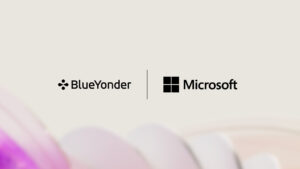
Shouldn’t technology give time back to clinicians for patient care rather than taking it?
In the frequent meetings I have with health system executives and clinicians, the same frustration is echoed over and over: “Since we implemented our EHR, we have less time for patient care because of all the clicks and keystrokes needed to document our care. We’re arriving earlier and staying later just to complete our charting because we can’t afford to see fewer patients.”
“Why aren’t clinicians demanding technologies from the HIT market that free up time for patient care rather than acquiescing to technologies that take it from them?”
Which begs the question, “Why aren’t clinicians demanding technologies from the HIT market that free up time for patient care rather than acquiescing to technologies that take it from them?” Clinicians are now voicing concerns en masse about unintended consequences of their EHR investments, including reduced time for patient-clinician interactions, burdensome data entry tasks being transferred to front-line clinicians, and longer clinician workdays. But it’s rare to find clinicians that outright refuse to accept any new technology that doesn’t given them more time in the day for patient care.
One of those “not taking it anymore” clinicians is Alejandro Necochea MD, a hospitalist internist from St Luke’s in Boise, ID, the largest non-governmental employer in the state and named by Truven Health Analytics as one of the nation’s top 15 health systems. Dr Necochea spends half of his time as a hospitalist and chair for the hospitalist quality committee and the other half overseeing St Luke’s post-acute transition care management and complex care management programs.
Eager to hear his technology success story and play it forward, I fired off several questions at him to quickly find out how he was leveraging technology to reduce his time on non-clinical tasks to free up more time for patient care. Below is a transcript of our conversation.
Schmuland: When we first met and you described some of the ways you were using Skype for Business, Microsoft’s unified communications platform, I saw right away that you had a knack for finding ways to use commodity technologies out of the box to improve your productivity, drive out waste, and reclaim time for patient care. Could you describe a few use cases within your day in the life where you’ve been able to do more with less and in less time?
Necochea: What’s empowering about Skype for Business is that it enables me to be just about anywhere I need to be without needing to physically go there. I can now virtually attend meetings from just about anywhere–from home or an offsite location. And I no longer need to be in my office to get things done and make things happen. For example, I’ll start with an incident at home a few months back. My daughter was sick so I was up several times with her during the night. No surprise, I hit the snooze too many times and ended up leaving too late to make my 8am meeting. Fortunately, while I was en route to the meeting I was able to attend it virtually just by clicking the “Join Online Meeting” link on my smartphone. Even though I arrived 15 minutes late I didn’t miss any of the meeting because I was virtually connected to the time I walked into the room. Immediately following that meeting I had a back-to-back meeting that was 15 blocks away. So, again, I just clicked on the “Join Online Meeting” link to attend that meeting virtually en route back to my office rather than rushing across town to attend it in person. Since that meeting finished early I ended up with extra time to complete a few action items rather than spend the time driving back to my office.
Schmuland: Do you have a sense of the amount of time you’ve been able to reclaim just with Skype for Business?
Necochea: I’d estimate that Skype for Business has enable me to increase my own personal productivity by about 25% It’s freed up for me the one to two hours a day I used to spend driving to and from meetings and has also reduced the total meeting time each day by one to two hours. That’s because, in healthcare, it seems like the standard meeting time is either 30 or 60 minutes—even if the meeting requires less time to achieve the goals of the meeting. So what usually ends up happening is nearly every meeting takes up the full allocation of time because, if the meeting leader ended the meeting early, most everyone would end up biding their time until the next meeting on their agenda. So the meetings I schedule now are more often 15 or 30 minutes long rather than 30 or 60 minutes. I’ve also been able to reclaim a lot of time by eliminating in person meetings that can be handled over instant messaging (IM). For example, with Skype for Business, instead of scheduling a meeting to get a few questions answered, I can usually just instant message (IM) folks and get the answers to the questions that, previously, I would have scheduled a 30-minute meeting for. If their presence indicator tells me they’re busy I can IM them and say, “call me when you’re free” and if their presence indicates that they’re available, then I can say over IM, “can I call you now?” By eliminating so many of the meetings that weren’t necessary, I now have more time to think, strategize, and get things done.




